Professor Hongyu Yu’s and Assistant Professor Kwai Hei Li’s research groups from the School of Microelectronics at the Southern University of Science and Technology (SUSTech) have recently achieved significant progress in the fields of wide-bandgap semiconductor power and sensor devices. Their featured topics consist of etch-free normally-off GaN recessed-gate MIS-HEMT, long-term reliable p-GaN HEMT, novel gate breakdown analysis method, and GaN-based angle and stress sensors.
Their results have been published in high-ranking international journals in the area of microelectronic devices, respectively, including IEEE Electron Device Letters and IEEE Transactions on Electron Devices.
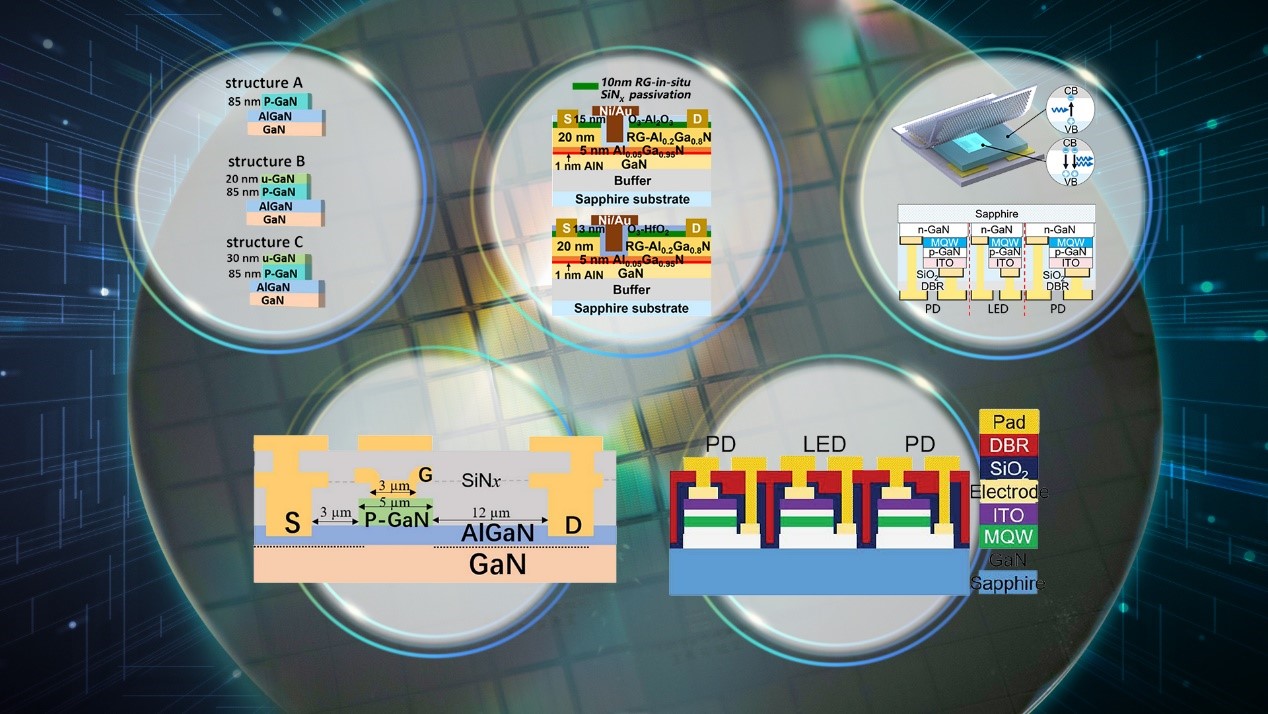
Etch-free normally-off GaN recessed-gate MIS-HEMT
Based on the requirement of normally-off GaN devices in the high-power circuit, Prof. Hongyu Yu’s group published a paper entitled “Normally-OFF AlGaN/GaN MIS-HEMTs with Low RON and Vth Hysteresis by Functioning In-situ SiNx in Regrowth Process” in IEEE Electron Device Letters.
They developed two novel selective area growth processes, combined with the high-quality in-situ SiNx and atomic layer deposition techniques to fabricate a series of high-performance etch-free normally-off GaN recessed-gate MIS-HEMTs. This work significantly compensates for the shortages of regrowth and in-situ SiNx techniques on the fabrication of normally-off GaN HEMTs. It achieves the ultralow on-state resistance and ultra-low threshold voltage hysteresis.
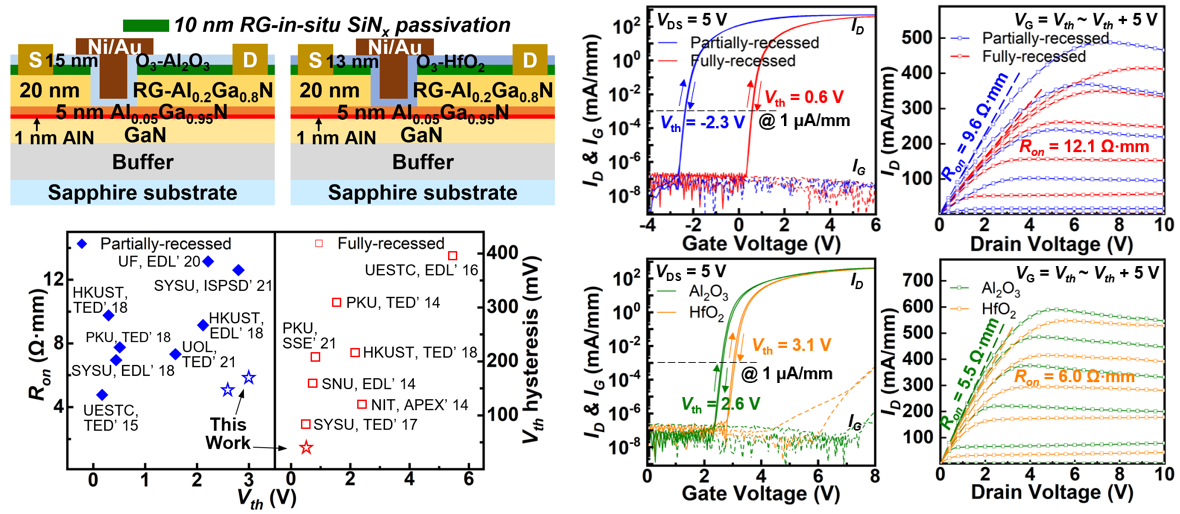
Figure 1. GaN recessed-gate MIS-HEMT structure and electrical measurements
Jiaqi He, a Ph.D. candidate at SUSTech, is the first author of the paper. The project was supported by the Department of Science and Technology of Guangdong Province and the Shenzhen Science and Technology Innovation Commission.
Progress in p-GaN HEMT with high reliability and a novel reliability characterization method for p-GaN HEMT
The normally-off p-GaN HEMT has been applied in high power modules. However, the reliability problem related to p-GaN HEMT is still a big issue even in commercialized power devices. Therefore, it is significant to study the p-GaN HEMT reliability mechanisms.
Prof. Hongyu Yu’s group reported an enhancement-mode GaN HEMT under 10.6 V maximum gate drive voltage by considering a ten-year lifetime at a failure level of 1%. Their paper, entitled “p-GaN Gate HEMTs With 10.6 V Maximum Gate Drive Voltages by Mg Doping Engineering,” was published in IEEE Transactions on Electron Devices. In this work, the gate metal/p-GaN Schottky junction peak electric field was significantly reduced by p-GaN epitaxy modulation.
Furthermore, for p-GaN HEMT gate breakdown mechanisms, Professor Yu’s group has proposed a novel characterization method. This research paper, entitled “Determination of the Gate Breakdown Mechanisms in p-GaN Gate HEMTs by Multiple-Gate-Sweep Measurements,” was also published in IEEE Transactions on Electron Devices. They managed to observe and identify the mechanisms of metal/p-GaN junction breakdown, the p-GaN/AlGaN/GaN junction breakdown, and the passivation-related breakdown separately. This paper offers a novel idea for p-GaN HEMT reliability characterization.
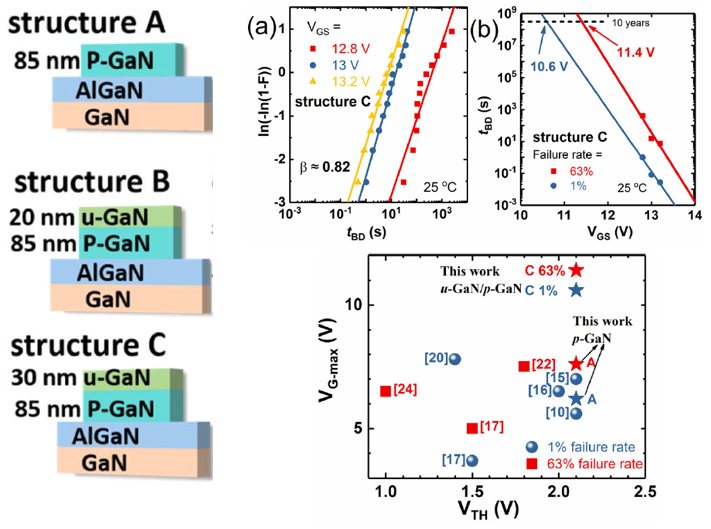
Figure 2. p-GaN HEMT device structure and characterization results
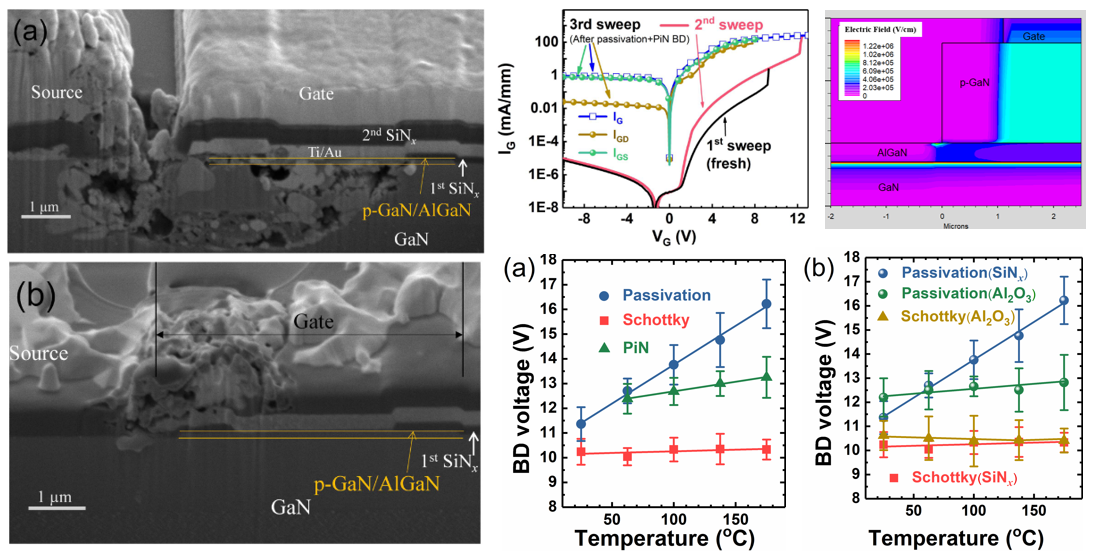
Figure 3. Results of different breakdown mechanisms in p-GaN HEMT
Guangnan Zhou, a Ph.D. candidate from SUSTech, is the first author of the above two papers. The project was supported by the Department of Science and Technology of Guangdong Province and the Shenzhen Science and Technology Innovation Commission.
Angle sensing device
Prof. Kwai Hei Li’s team proposed the integration of a tiny GaN device capable of emitting and detecting light with a container filled with ethanol. The filled ethanol modulated the amount of internally reflected light during rotation, and an on-chip detector generated a photocurrent signal to indicate the corresponding angular change. The device dimensions were 5 mm × 5 mm × 4 mm. The photocurrents measured from four on-chip detectors can be used to distinguish the full angular range of 0–360°, and a response time of 0.33 s was demonstrated.
Their results were published in IEEE Electron Device Letters, entitled “III-Nitride Microsensors for 360°Angle Detection”.
Jiahao Yin, a doctoral student at SUSTech, is the first author of this paper.

Figure 4. (a) Device diagram after encapsulation; (b) Curve of photocurrent as a function of the rotation angle
Pressure sensing device
Prof. Kwai Hei Li’s team proposed integrating a light source and a photodetector on a single GaN chip and combining it with a micropatterned PDMS film to realize a miniature pressure sensor. When external pressure was applied, the contact area of the PDMS film with the micro-dome array structure and the GaN chip increased, thereby changing the light propagation path and photocurrent value. The size of the sensing device was 2 mm × 2 mm × 0.4 mm. The response time was less than 5 ms, and the device had higher sensitivity compared with literature reports. Its stability was verified by 18,000 cycle tests. Furthermore, its real-time monitoring capability in wearable applications has been experimentally demonstrated.
Their results, entitled “A Chip-Scale GaN-Based Optical Pressure Sensor With Microdome-Patterned Polydimethylsiloxane (PDMS),” were published in IEEE Electron Device Letters.
Xiaoshuai An, a joint doctoral student at SUSTech and The University of Hong Kong (HKU), and Yumeng Luo, an undergraduate student at SUSTech, are the co-first authors of this paper.
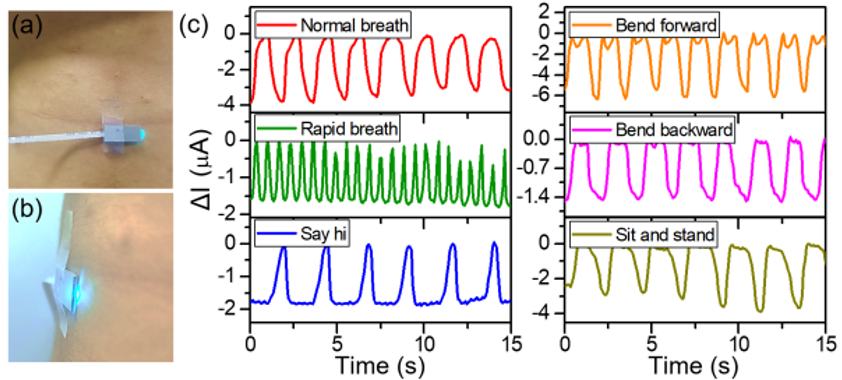
Figure 5. (a) front view and (b) side view of the device immobilized on the human abdomen; (c) photocurrent changes measured under different body movements
Paper links (In order of appearance above):
IEEE Electron Device Letters: https://ieeexplore.ieee.org/document/9706449
IEEE Transactions on Electron Devices: https://ieeexplore.ieee.org/document/9737317
IEEE Transactions on Electron Devices: https://ieeexplore.ieee.org/document/9354065
IEEE Electron Device Letters: https://ieeexplore.ieee.org/document/9663295
IEEE Electron Device Letters: https://ieeexplore.ieee.org/document/9509502
To read all stories about SUSTech science, subscribe to the monthly SUSTech Newsletter.
Proofread ByAdrian Cremin, Yingying XIA
Photo By